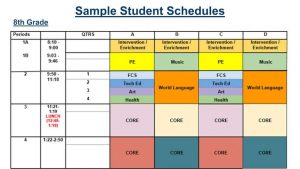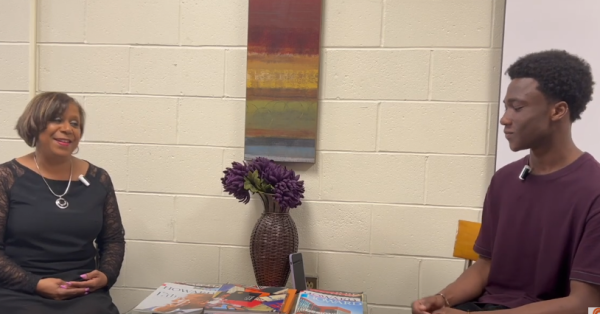Why Block Scheduling Is The Way To Go
February 13, 2020
The implementation of block scheduling at Stamford High School and Westhill High School has become a largely disputed issue in the Stamford Public School (SPS) system these past years. Students complain that they are already used to the current schedule, while teachers argue that they will not be able to effectively teach their curriculum. However, SPS seems to be ignoring concerns and is pushing for the new schedule to be in place for the 2020-2021 school year. Despite the opposition, I believe that SPS is making the right decision. Here’s why.
People will always be opposed to change. Teachers who have taught at SPS high schools for many years don’t want to alter their daily work schedule, while current upperclassmen don’t want to shift from something they have known for years. This opposition for the new schedule focuses too much on the negatives of the situation and seems to be more of a “follow the crowd” ordeal”. Instead, they should begin to consider the true benefits that a block schedule would have on high-schoolers.
One of the major changes to high school schedules would be the increase in the number of classes students can take. Unlike now – where students can take up to seven courses each year – block scheduling would allow students to take an extra class, bringing that number to eight.
In order to avoid forcing teachers to teach an extra class, SPS proposes a “WIN” period, during which students can take the time to complete their homework or get extra help. This period would then replace the need of a study hall in any student’s schedule, and act as a set time for students to complete school work that they struggle to find time for outside of school for (especially for those that are incredibly busy).
This increase in the number of class opportunities coincides with the new high school credit requirement that the State of Connecticut has recently put in place. The law, written under the Substitute Senate Bill No. 1059, states that “Commencing with classes graduating in [2020] 2021, and for each graduating class thereafter, no local or regional board of education shall permit any student to graduate from high school or grant a diploma to any student who has not satisfactorily completed (1) a minimum of twenty-five credits.” Prior to this, the graduation credit requirement for high-schoolers was 20.
With the current schedule, Stamford High students are able to take a maximum of 28 credit-earning classes during their four years of high school (seven classes for four years). This means that the current tenth, eleventh, and twelfth graders can fail to receive credit for eight of those classes and still graduate. In contrast, the freshmen class can only fail to get credit in three. This difference – from eight classes to three – is completely unfair for future grades. Credit can be lost to health reasons (for example, losing credit in gym because of an injury), family issues, or the taking of study halls in order to allow for ample study time. For example, a student who takes one study hall for three years and loses one half credit of gym due to a broken foot would not be allowed to graduate on time. He or she would have a total of 24.5 credits, just short of the 25.
This student could be perfectly adequate, but because of unpredictable conditions, he or she would not be able to graduate. With the new block schedule, students would be given a greater leeway and therefore increase their chances of graduation. Block scheduling increases the number of possible credits from 28 to 32, which gives current freshmen and future classes the same amount of credit “elbow room” that previous and current classes have now.
The other big change that comes with block scheduling would be the length that each class is. As of now, each regular class at Stamford High is about 55 minutes, with one “long period” that lasts about 90 minutes. With block scheduling, all classes would be 90 minutes long, with four classes each day.
One of the most frequent complaints from students and teachers is that this increase in time will result in increased distractedness and lack of productivity. However, the reality is that longer class periods help students prepare for college. The classes mimic the length of college classes, which, depending on the number of the class you take each week, can range from one to two hours. If students are having issues with their attention span, it would be better for them to get used to longer classes now instead of in college, when each credit costs hundreds of dollars.
Rebecca Johnstone, a long term substitute teacher who took the place of teacher Melissa Correa this year, has previously worked on a block schedule while at the Academy of Information Technology and Engineering (AITE). She feels that block scheduling was an overall better experience for her, compared to Stamford High’s rotating seven periods. “Instructionally, block schedules lend itself better to learning, just because of how much you’re there and how much you get to learn,” she said.
Practicing teachers are not the only ones who feel this way. Christopher Tienken, an associate professor of education administration at Seton Hall University, described short, 50 minute class periods as “a constant race against the clock.” He argues that they don’t allow teachers to allow time for independent practice, offer extra help, or deliver a “comprehensive closure” at the end of class. Furthermore, he noted that an A/B (block) schedule gives students a day break from each class, giving them time to “internalize” the information and therefore learn more efficiently.
Whether you support the new block schedule or not, it is clear that SPS needs an updated bell schedule. Other schools in the area, such as New Canaan High School and Darien High School, offer students eight periods of classes. The schedule rotates in the same way as the current Stamford High schedule does, just with shorter class periods in order to accomodate seven classes in one day instead of six. As previously mentioned, this increased number of possible credits helps students when it comes to graduation requirements.
Overall, it is time for Stamford High School and Westhill High School to consider a new daily schedule, and by the looks of SPS’s actions, that will most likely be block scheduling. If the shift is successful, students will benefit academically and be better prepared for college.
















